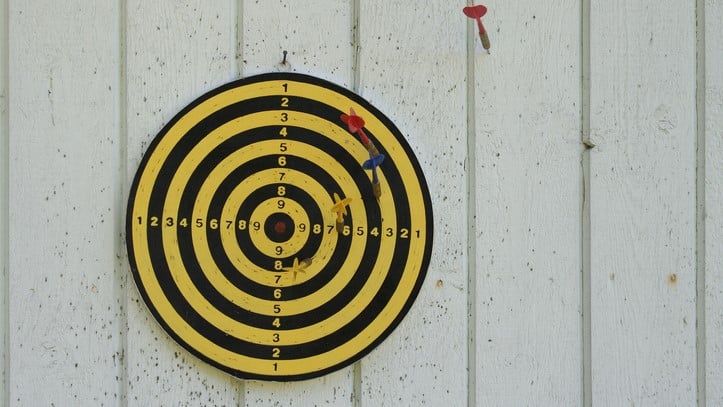NORTHCOM commander: ‘Strong concern’ spectrum auctioning could jeopardize Golden Dome
“Almost all the systems that we use for homeland defense rely on that part of the spectrum that’s being considered to be either sold or shared,” Gen. Gregory Guillot, commander of US Northern Command, said.


Gen. Gregory M. Guillot, commander of U.S. Northern Command and North American Aerospace Defense Command, testifies before the House Armed Services Committee in Washington, D.C. March 21, 2024. (DoD photo by EJ Hersom)
WASHINGTON — Gen. Gregory Guillot, commander of US Northern Command, warned members of Congress today that auctioning off parts of the electromagnetic spectrum to industry could negatively impact President Donald Trump’s Golden Dome initiative.
When asked by Rep. Mike Rogers, chairman of the House Armed Services Committee, if there are worries that auctioning the 3.1-3.45 GHz band could jeopardize Golden Dome, Guillot told the committee he has a “strong concern.”
“Almost all the systems that we use for homeland defense rely on that part of the spectrum that’s being considered to be either sold or shared,” Guillot added.
During Rogers’ opening remarks, he initially raised concerns over the dangers losing access to the spectrum would have on Golden Dome.
“There is an effort afoot to auction off parts of the spectrum of DoD and DoD needs to track incoming missiles. This spectrum supports most of our military radar systems, including our early warning and homeland missile defense. Losing it would put President Trump’s Golden Dome initiative at serious risk and undermine our security,” Rogers said.
For years the Defense Department and commercial providers have tussled over the usage of this band of the spectrum — widely considered to be the “Goldilocks” zone. The DoD long has contended that the 3.1-3.45 GHz band is essential for its various satellite communications, radars and navigation systems. However, US and foreign commercial companies covet those frequencies for providing high-speed wireless service to civilian and military users alike.
Rogers bringing up Golden Dome — a US-built, multilayered missile defense system that the Trump administration has made a key feature of its defense plans — by name may be an attempt to seed the ground for an expected tug of war within the Trump administration over spectrum sharing.
RELATED: Not on the same wavelength: Trump inherits spectrum fight between DoD, commercial industry
Notably, a similar line of questioning tying Golden Dome to the spectrum issue unfolded across the hill, as a Senate Armed Services Committee hearing for Trump’s nominee to be Chairman of the Joint Chiefs of Staff, Lt. Gen. John Caine.
Republican Senator Mike Rounds of South Dakota asked Caine whether he was aware that Trump’s Golden Dome would require a number of radar systems that fall between the 3.1-3.45 GHz band.
Caine responded that he was “familiar with the basics of that frequency spectrum,” and while he didn’t know “what particular radars Golden Dome has brought into their mix of equipment,” it wouldn’t “surprise” him.
Additionally, when Sen. Deb Fischer, R-Nebraska, asked Caine if he agrees that the DoD should have a “meaningful” co-leadership with any inter-agency efforts to determine the future use of federal spectrum, Caine replied that “we certainly want to have a voice in the conversation.” He added that while he is not in the position of Chairman yet, if he is confirmed he will have “that conversation with the Secretary about co-leadership.”
The Federal Communications Commission (FCC) and the National Telecommunications and Information Administration (NTIA) are the two organizations responsible for setting US spectrum policy, and governing which users get access when to what bandwidths for what functions. The FCC regulates commercial spectrum usage while the NTIA is responsible for advocating for spectrum usage for military departments.
When asked by Fischer what national security risks would arise if the department was “forced to vacate” the 3.1-3.45 GHz band, Caine replied that he would need to answer that in a closed session as he wouldn’t want to “tip that off to our adversaries who might be listening.”
However he said, “if we lose portions of that spectrum, will lose some exclusivity related to our combat capability.”
In written testimony, Caine was able to share with lawmakers some examples on why the S-band of the spectrum (2-4 GHz) is vital for electronic warfare operations.
“The DOD’s use of the S-band for spectrum operations is essential for maintaining operational advantage, and its loss or disruption could have significant impacts on military effectiveness affecting the defense of the Homeland from strategic and missile attack,” he wrote.
He specifically said that the loss of the S-band could hinder the performance of the Navy’s Aegis Combat System, which relies on S-band radar to detect and engage airborne targets. He also said that the loss of S-band could disrupt the operation of the Army’s Patriot air defense system, which uses S-band radar to detect and track incoming missiles.
“Furthermore, the loss of S band spectrum could also impact the DoD’s ability to conduct electronic warfare operations, as many EW systems, such as the Navy’s SLQ-32 and the Air Force’s ALQ-211, rely on S-band spectrum to detect and disrupt enemy radar and communication systems,” he added.



















































































































































































